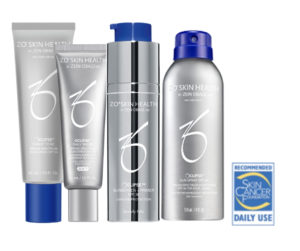Sunscreen…seems like a simple concept to apply sunscreen to protect our largest organ when going outside but what sunscreen is best?
Which sunscreen is the best match for my skin type?
How much do you actually need to put on and when do you re-apply?
Finding a sunscreen that you like and enjoy putting on is possible and it doesn’t have to feel heavy, greasy, will not cause breakouts and can even feel wonderful on the skin!
Let’s take a closer look at the information printed on sunscreen bottles:
SPF ( Sun Protection Factor) is a number indicating how long skin protected with sunscreen will take to burn compared with unprotected skin.
The American Association of Dermatology (AAD) recommends a daily sunscreen of at least 30 SPF however, if you have unwanted pigment (brown spots or melasma) or have sensitive skin, a higher SPF offers more protection.
SPF refers to a sunscreens ability to deflect UVB rays as these are usually the rays that cause us to burn, whereas the UVA rays penetrate more deeply into the dermis and causes aging as well as being linked to long term skin damage like wrinkles and skin cancer.
This is where tanning bed must be discussed as most tanning beds give off more UVA rays and thus using a tanning bed have been linked to higher rates of skin cancer.
Sunscreens are divided into two main categories of physical sunscreens and chemical sunscreens.
Physical sunscreens contain minerals such as zinc oxide and/or titanium dioxide and these block both UVA and UVB and work as soon as it is applied to the skin.
These are wonderful for sensitive skin types and are less likely to clog pores, can limit redness and rosacea and has a longer shelf live.
Newer sunscreen formulations have helped the physical sunscreens be less chalky in appearance and more easily have makeup be applied on top.
Chemical sunscreens use chemical carbon compounds that convert UV radiation to heat that is released from the body.
Oxybenzone and /or octinoxate are common ingredients in chemical sunscreens.
The pros of chemical sunscreens is they are usually a lighter weight making makeup application easier and has less of a likelihood of streaking.
Smaller amounts can cover a larger area and often times other ingredients like peptides or growth factors can be combined for added benefit to the skin.
The downside to chemical sunscreens include a delayed time of protection of up to 20 minutes after being applied to the skin.
There is a higher percentage of irritation and the amount of irritation often increases as the SPF increases.
There is increasing data of chemical sunscreens not being “reef friendly” and places like Hawaii are considering a ban on chemical sunscreens.
Like physical sunscreens these types of sunscreens need to be reapplied often.
So let’s return to the most important question-which sunscreen is best for you?
As quickly outlined above there are several personal factors that need to be considered…do you want a daily sunscreen that will offer a tint and be your “makeup” as well as your protection? Do you have redness or rosacea ? Are you trying to get melasma or other pigmentations improved? Are you looking for protection while being physically active-swimming, running, fishing or outside with kids?
Here at Redefine Beauty Aesthetics we LOVE our sun protection choices and can help you find your perfect match or matches because often times we need one sunscreen for work and everyday use and another sunscreen for when we are outside being active. Come in and let’s help you find a sunscreen you will love and enjoy wearing!


